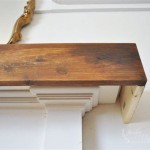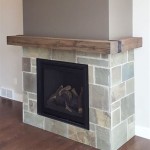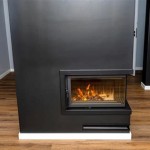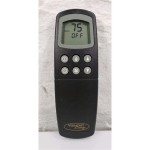Installing a Wood Burning Stove in an Inglenook Fireplace
Installing a wood burning stove within an inglenook fireplace can be a rewarding project, adding both aesthetic charm and efficient heating to a home. However, it's a task that demands careful planning, adherence to safety regulations, and often, professional expertise. This article outlines the key considerations and steps involved in safely and effectively installing a wood burning stove in an inglenook fireplace.
An inglenook fireplace, traditionally a recessed area designed to house a hearth and chimney, presents a unique set of challenges and opportunities for stove installation. Its existing structure often requires modification to accommodate the stove and ensure proper ventilation. Furthermore, the aesthetics of the installation are paramount, as the stove should complement the character of the inglenook and the surrounding room.
Assessing the Inglenook and Chimney
The initial step involves a thorough assessment of the existing inglenook and chimney. This assessment is critical to determine the feasibility of the installation and to identify any necessary repairs or modifications. The following aspects should be carefully examined:
Chimney Condition: The chimney's integrity is paramount. A professional chimney sweep should inspect the chimney flue for blockages, cracks, or deterioration. A chimney in poor condition poses a significant safety hazard, as it can lead to carbon monoxide poisoning or a chimney fire. If the chimney is damaged, it may require relining with a stainless steel liner, a flexible flue liner, or a concrete-based product. The choice of liner depends on the stove model and local building codes.
Inglenook Dimensions: Accurate measurements of the inglenook are essential to ensure the chosen stove will fit comfortably within the recess. Consider the stove's dimensions, including its height, width, and depth, as well as the required clearances for combustible materials. Sufficient space around the stove is necessary for safe operation and maintenance. Check the manufacturer's installation instructions for the specific clearances required for the chosen stove model.
Hearth Suitability: The hearth, the non-combustible surface beneath the stove, must be of adequate size and construction to provide protection against radiant heat and dropped embers. Building regulations typically specify minimum hearth dimensions and the required thickness of the hearth material. If the existing hearth does not meet these requirements, it will need to be extended or replaced.
Ventilation: Proper ventilation is crucial for the safe and efficient operation of a wood burning stove. The inglenook should have adequate airflow to support combustion and prevent the buildup of carbon monoxide. In some cases, it may be necessary to install an air vent to provide a direct source of fresh air to the stove. The size and location of the vent should be determined by a qualified professional.
Choosing the Right Wood Burning Stove
Selecting the appropriate wood burning stove for an inglenook fireplace involves considering several factors, including heating requirements, aesthetic preferences, and technical specifications. The following aspects should be taken into account:
Heating Capacity: The heating capacity of the stove should be matched to the size of the room or area it is intended to heat. A stove that is too small will not provide adequate heat, while a stove that is too large can overheat the space. Heating capacity is typically measured in British Thermal Units (BTUs) per hour.
Stove Efficiency: The efficiency of a wood burning stove refers to the percentage of fuel energy that is converted into usable heat. More efficient stoves burn cleaner and require less fuel to produce the same amount of heat. Look for stoves with high efficiency ratings and consider models that are EPA-certified. The EPA certification ensures that the stove meets stringent emission standards.
Stove Design: Wood burning stoves are available in a wide range of designs, from traditional cast iron models to contemporary steel stoves. Choose a stove that complements the style of the inglenook and the surrounding room. Consider the stove's finish, door design, and overall appearance.
Flue Outlet: The location of the flue outlet on the stove is an important consideration, as it must align with the existing chimney flue. Stoves are typically available with top or rear flue outlets. Choose a stove with a flue outlet that will allow for a direct and unobstructed connection to the chimney.
Installation Process
The installation process involves several steps, each of which must be performed carefully and in accordance with building regulations and manufacturer's instructions. While some homeowners may attempt to install the stove themselves, it is generally recommended to hire a qualified professional to ensure a safe and compliant installation. The following steps outline the typical installation process:
Hearth Preparation: Prepare the hearth by extending or modifying it to meet the required dimensions and specifications. The hearth should be level and constructed of non-combustible materials such as stone, brick, or concrete.
Flue Connection: Connect the stove to the chimney flue using appropriate flue pipes. The flue pipes should be made of heavy-gauge steel or stainless steel and should be properly sealed to prevent leaks. Ensure that the flue pipes are installed with the correct slope to allow for proper draft.
Stove Placement: Carefully position the stove on the hearth, ensuring that it is level and stable. Maintain the required clearances from combustible materials, such as walls, furniture, and curtains. Refer to the manufacturer's installation instructions for the specific clearance requirements.
Air Supply: Ensure that the stove has an adequate supply of fresh air for combustion. This may involve installing an air vent in the inglenook or connecting the stove to an external air source. The size and location of the air vent should be determined by a qualified professional.
Smoke Test: After the stove is installed, perform a smoke test to verify that the chimney is drawing properly and that there are no leaks in the flue system. This involves lighting a small fire in the stove and observing the smoke flow. If the smoke is not drawing properly, it may be necessary to make adjustments to the flue system or chimney.
Carbon Monoxide Detector: Install a carbon monoxide detector in the room where the stove is located. Carbon monoxide is a colorless, odorless gas that can be deadly. A carbon monoxide detector will alert you to the presence of this gas, allowing you to take appropriate action.
Meeting Building Regulations
Installing a wood burning stove is subject to building regulations, which are designed to ensure the safety and efficiency of the installation. It is essential to be aware of and comply with these regulations to avoid potential fines or legal issues. The specific regulations vary depending on the location, but generally include requirements related to:
Chimney Height: The chimney must be of adequate height to ensure proper draft and to prevent smoke from entering neighboring properties. Building regulations typically specify minimum chimney heights based on the roof pitch and the proximity of nearby buildings.
Hearth Dimensions: The hearth must meet minimum size and construction requirements to protect against radiant heat and dropped embers. Building regulations specify the required dimensions and thickness of the hearth material.
Clearances to Combustibles: The stove must be installed with adequate clearances from combustible materials, such as walls, furniture, and curtains. Building regulations specify minimum clearance distances to prevent the risk of fire.
Ventilation: The stove must have an adequate supply of fresh air for combustion. Building regulations may require the installation of an air vent to provide a direct source of fresh air to the stove.
Carbon Monoxide Detector: A carbon monoxide detector must be installed in the room where the stove is located. This is a mandatory safety requirement in many jurisdictions.
It is advisable to consult with a building control officer or a qualified installer to ensure that the installation complies with all applicable regulations. Failure to comply with building regulations can result in enforcement action and may invalidate your home insurance policy.
Maintenance and Safety
Regular maintenance is essential for the safe and efficient operation of a wood burning stove. The following maintenance tasks should be performed regularly:
Chimney Sweeping: The chimney should be swept at least once a year, or more frequently if the stove is used heavily. Chimney sweeping removes creosote, a flammable substance that can build up in the chimney and cause a chimney fire.
Stove Inspection: Regularly inspect the stove for signs of damage or wear. Check the door seals, flue pipes, and firebricks. Replace any damaged or worn parts promptly.
Ash Removal: Remove ashes from the stove regularly. Allow the ashes to cool completely before disposing of them in a metal container.
Flue Pipe Inspection: Regularly inspect the flue pipes for signs of corrosion or damage. Replace any damaged flue pipes promptly.
In addition to regular maintenance, it is important to follow these safety precautions:
Use Seasoned Wood: Only burn seasoned wood in the stove. Seasoned wood has a lower moisture content and burns more efficiently, producing less smoke and creosote.
Never Overfire the Stove: Do not overload the stove with fuel or operate it at excessive temperatures. Overfiring the stove can damage the stove and chimney and increase the risk of a chimney fire.
Keep Combustible Materials Away: Keep combustible materials, such as furniture, curtains, and rugs, away from the stove. Maintain the required clearances from combustible materials as specified in the manufacturer's instructions.
Supervise Children and Pets: Supervise children and pets when the stove is in operation. The stove can become very hot and pose a burn risk.
By following these maintenance and safety guidelines, homeowners can enjoy the warmth and comfort of a wood burning stove safely and efficiently.

Wood Burner Installation Into Inglenook Fireplace Bighton Alresford Hampshire Log Alton

Inglenook Fireplace Wood Burning Stove Installers In Wellington Somerset

Inglenook Fireplaces Wood Burning Stoves Stove Fitters N Fitting

Log Burner Installer Glowing Stoves Hetas Wood Fitters In Taunton

Installation Of Hunter Inglenook Woodburner In Dunster On Exmoor
.jpg?strip=all)
Inglenook Fireplaces Wood Burning Stoves Scarlett Essex

Hunter Inglenook Stove Installation By The House

Inglenook Fireplaces Wood Burning Stoves Stove Fitters N Fitting

Wood Burner Installation Into Inglenook Fireplace Bighton Alresford Hampshire Log Alton

Installation Of Clarke Majestic Woodburner In Woolavington Near Bridgwater
Related Posts








